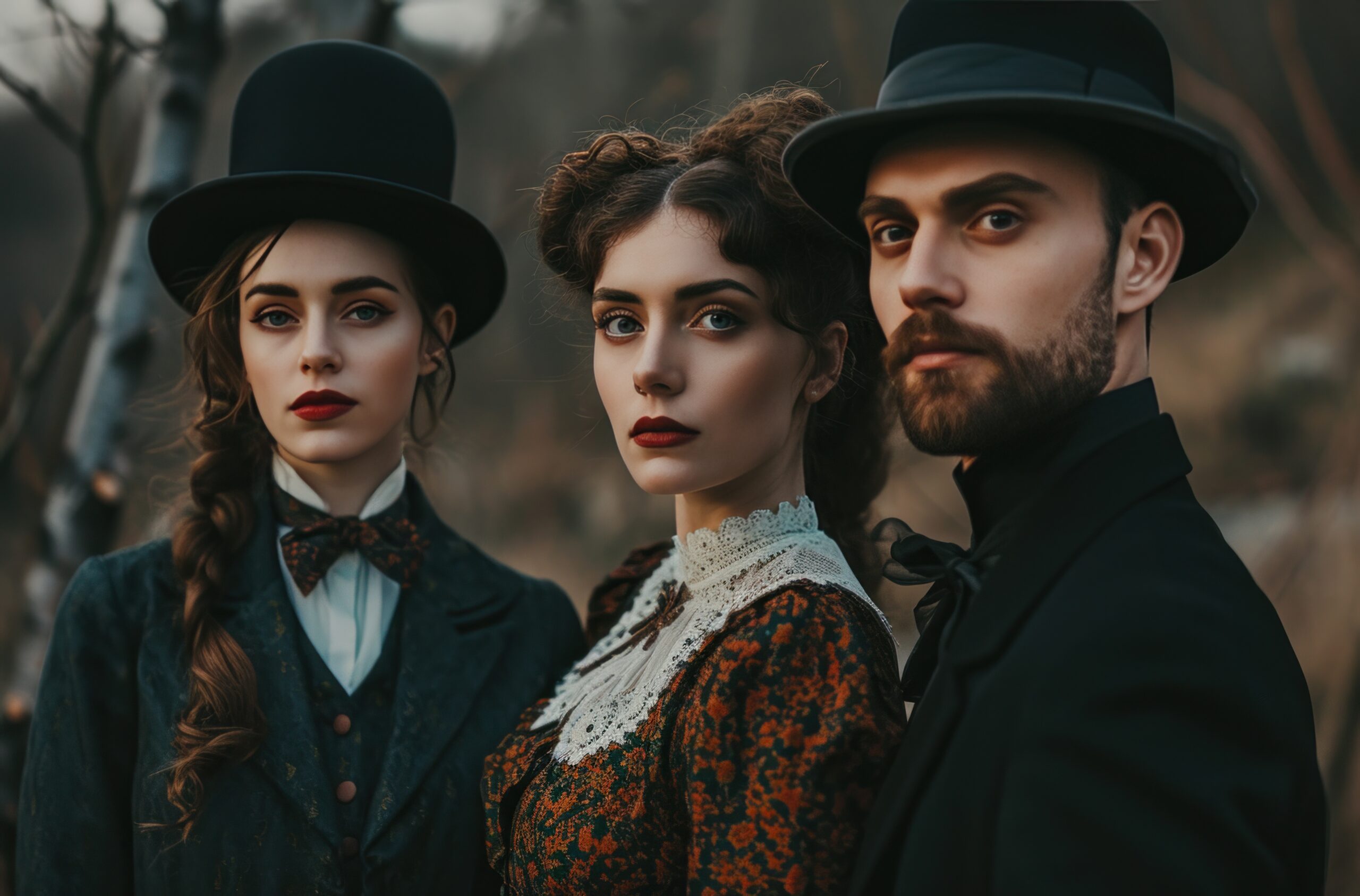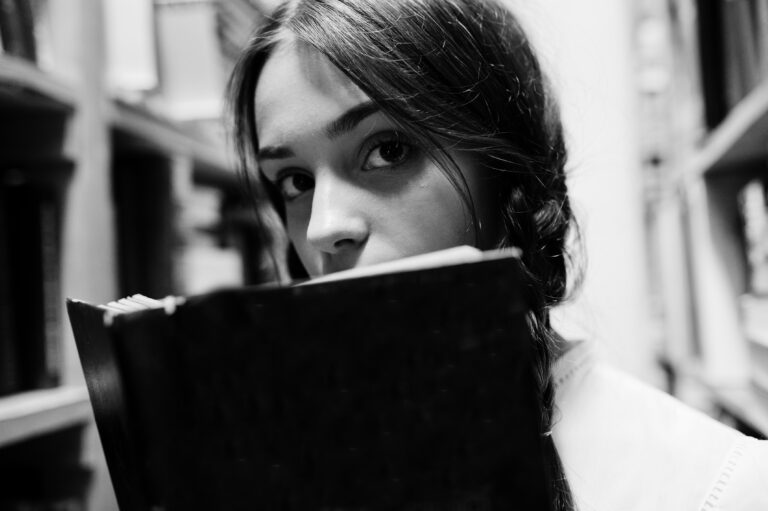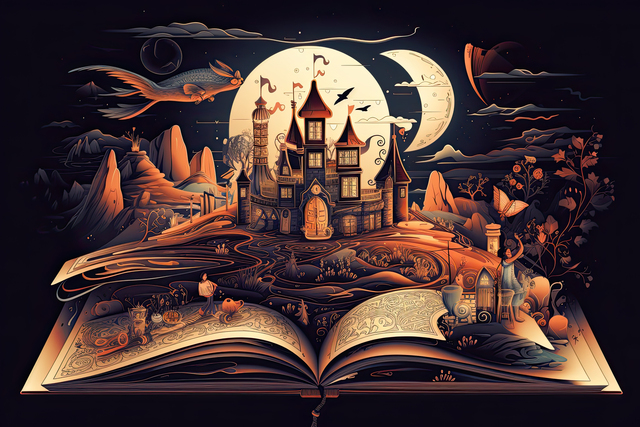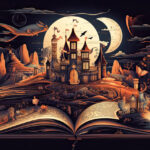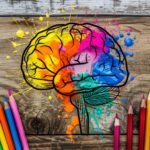Character archetypes are the bones of a character, but if you aren’t careful they can become a trope.
T-shirt sold here: http://www.rebel-industries.com
In the 1985 cult classic The Breakfast Club, the opening monologue transports us to a time we were labeled: “You see us as you want to see us: in the simplest terms, the most convenient definitions. You see us as a Brain, an Athlete, a Basketcase, a Princess, and a Criminal. Correct? That’s the way we saw each other at 7 o’clock this morning. We were brainwashed.” We all identified with one label or another. Yet, the heart of the film is that no one truly fits into a box. So, then, what is the point of labels?
Labels simplify, but they also give us a frame of reference. Archetypes represent the origin of modern labels, distilling human nature into recognizable forms. They are a foundational compass for us to build upon. My favorite novels are those that are character driven, meaning the plot feels driven by the characters, rather than the characters driven by a plot. So I see archetypes as the building blocks of storytelling, offering us an instant sense of who someone is before we learn their complexities. Much like the kids in detention, characters evolve beyond their labels. Archetypes serve as both a starting point and a mirror, reflecting fundamental truths about humanity while allowing room for growth.
Understanding Archetypes
Fedor Lunin. https://www.vecteezy.com/members/loseyourself
An archetype is a universal symbol or character type. It recurs across cultures and time periods. In stories, archetypes are familiar patterns of behavior and personality. They help readers quickly identify a character’s essence. These figures: the Hero, the Outlaw, the Lover, and others represent deep, fundamental human experiences.
Psychologist Carl Jung popularized the idea of archetypes. He believed they are part of the “collective unconscious.” This is a shared mental framework that transcends individual experiences. Jung said archetypes are universal, instinctive patterns of thought and behavior. We all understand them. They manifest in myths, legends, and storytelling, offering a lens through which we can explore the human psyche.
Archetypes are vital in storytelling. They connect characters and the audience on an emotional level. They tap into our subconscious. They let us connect with a character’s struggles and triumphs, even if the story’s world is very different from our own. Archetypes create timeless, familiar, and emotional stories. They underlie the Hero’s call to adventure and the Lover’s quest for connection. They remind us of the truths that bind all stories. So, they are not just a tool for writers. They are a cornerstone of human connection.
Archetypes Across Cultures and Time Periods
Olga Bereslavskaya. https://www.vecteezy.com/members/helgaq
From ancient epics to folktales, archetypal figures like the lover, jester, and sage appear consistently, shaping the flow and meaning of stories. These figures transcend individual characters and plotlines, helping societies convey important lessons, preserve cultural values, and connect generations.
For instance, the hero archetype is common across cultures. In Greek mythology, Heracles embodies physical strength and valor, overcoming trials to achieve immortality. The Monkey King in Chinese lore also represents the hero, evolving from a mischievous trickster into a martial master who battles gods. Indigenous American myths often feature many beings who bridge the material and spiritual worlds, embarking on quests that benefit their tribes. Despite their cultural differences, these heroes share core traits like courage, perseverance, and transformative journeys.
Archetypes, while enduring, can evolve. The trickster, once seen as purely chaotic in figures like Loki from Norse mythology or the shape-shifting Coyote from Indigenous American stories, has grown more complex in modern narratives. Characters like Marvel’s Iron Man or even Loki in that universe play both sides of the morality spectrum, challenging norms and using wit and deception in unexpected ways. This evolution reflects the shifting values of modern culture, but the essential nature of archetypes remains.
Through their evolving forms, archetypes continue to reveal our shared humanity. Though the world changes, the patterns in our stories—and our lives—remain constant, reflecting timeless truths about the human experience.
Common Archetypes in Storytelling
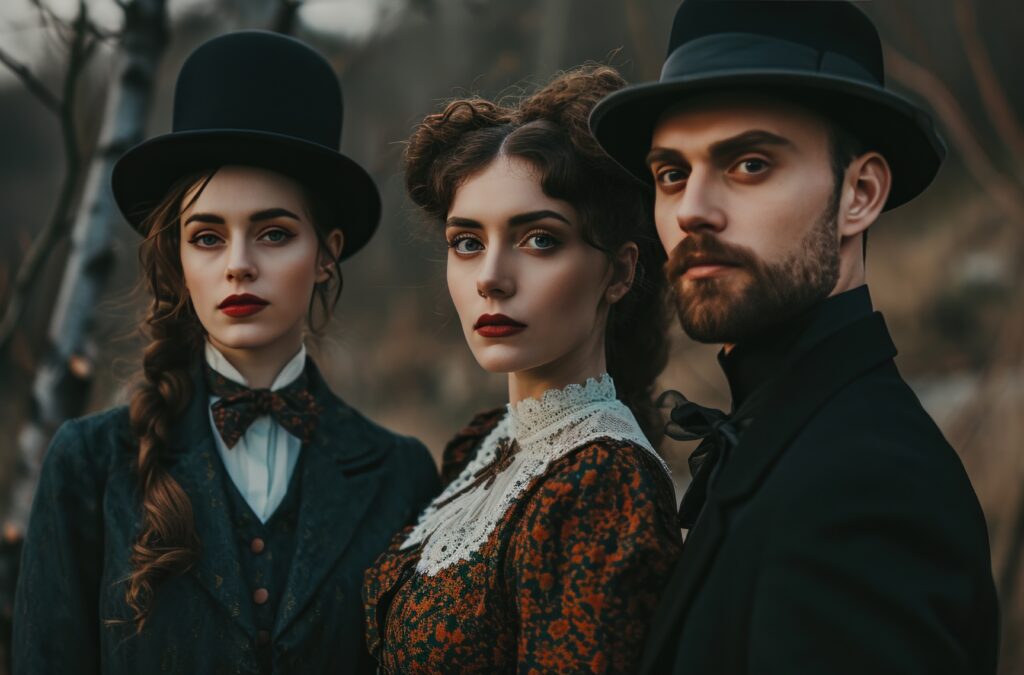
The Lover
The lover is not always who they seem. Though this character is often the love interest of the protagonist, their most important job is to give the reader an emotional connection to the main character. This character doesn’t have to be a romantic interest, this person only needs to love the protagonist. The reader’s emotions need to be evoked by this character, and it doesn’t have to be love. The Lover is about want: the need to connect, romantically, amicably or familiarly.
The Hero
The Hero is the character who bravely charges into danger, sometimes with more guts than sense. They are often driven by their savior complex and they are usually the main character, or at least, central to the story. The Hero represents the gritty, often messy pursuit of justice, usually while collecting scars and unresolved trauma along the way. We connect with the Hero often because of the lover. THose who start out broken remind us that even the brave have baggage, and their battles, both external and internal. They remind us that even our ghosts and monsters can be fought.
The Outlaw
The Outlaw is your quintessential rule-bender with a penchant for existential crises. Often used as a character of chaos, or an anti-hero. They are fueled by a craving for freedom, justice, or revenge, they scoff at society’s rules as mere constraints. Here’s lookin’ at you, Wolverine! They’re the agents of delightful mayhem. We love the way they upend the status quo and force us to question our own morals. Rooting for them feels like cheering for the punk rockers of the story—defying conformity with a smirk and a reckless attitude, even if it means a spectacular downfall.
The Explorer
The Explorer is the classic seeker, a restless searcher for fresh experiences and hidden truths, who will go to almost any lengths to find out what lies beyond the boundaries. He embodies the impulse to escape, the need to go wherever hasn’t been before – even if it kills him. He stimulates our own appetite for adventure, however vicariously and hilariously disastrous. He inspires both awe and existential terror in us, reminding us that next time we might be the ones left at home on the couch.
The Sage
The Sage is the keeper of wisdom and knowledge. They are a character who dispenses advice and guidance. In modern archetypes this character has shifted to the mentor, guru, or some fashion of wise elder. They are often a seer and a knower, whether the story has magical elements or not. They could be the therapist or an old man in a nursing home. While the sage is a source of wisdom, their wisdom is not freely given. The advice is often opaque. Rather than being stated in a clear blunt manner, the sage speaks in riddles ensuring that the lesson is learned in a journey.
The Creator
The Creator is the archetype of imagination, who invents new worlds or ideas with panache and eccentricity. This is the personality type that invigorates us with its sheer creativity to invent something new, from a whole new universe to a novel kitchen appliance, and to infuse the mundane with wonder or the weird. They are the mavericks and the mad scientists, the tricksters and the visionaries. Their audacious genius makes us question if we’re just one of their lab experiments. Their spirit is often as awe-inspiring as it can be frustrating. Dream big, they say. But at the same time, dreaming big gives rise to many existential questions, not to mention the occasional ‘what was I thinking?’ moments.
The Innocent
The Innocent archetype embodies purity and optimism, but will often be seen by other characters as a naive idealist who believes the best in everyone despite the odds. In stories, this character represents the pursuit of joy, happiness, and morality, usually until reality harshly proves them wrong. They charm us with their hopeful simplicity, sparking a mix of sympathy and frustration. Their sunny outlook can be endearing but often leads to unexpected troubles, highlighting the risks of being too good for one’s own good.
The Caregiver
The Caregiver is a giver, often self-sacrificing, motivated by the need to care for others before self. Often, they are moved by compassion, empathy and a need to protect, nurture or help others. The Caregiver is usually a guardian, healer or mentor who steps in to provide stability and care in times of crisis. In the Caregiver’s story, their arc can be stifling, ignoring the needs of others in favor of their own. The core emotional charge of the Caregiver is revealed through themes of love, sacrifice and protection.
The Jester
The Jester is a habitual irreverent, an archetype committed to turning serious situations into punchlines, absurdity into laughter. He is as funny as he is mischievous, and his sense of humor is a weapon. He laughs to shock, to take away the seriousness, to discomfort, to undermine, to mock, to expose, to satirize … The Jester is there to keep us honest, to help us recognise the truth behind his punchlines. He is there to remind us how much of life is an absurd struggle and what a sweet relief it is to laugh it off.
The Everyman
The Everyman is the ultimate ordinary man or woman caught up in life’s quotidian grind and asking why things aren’t different, why things aren’t special. He — or she — is the average Joe (or Jane) who makes it through each day without much incident. The Everyman is the every person, the protagonist in the story of everyday life, which can be so ordinary that its main character has little choice but to seek novelty where he can, even if it means reminding us of how ordinary we are. He often adopts a working-class perspective that is as down to earth as it is understated, and he uses his wry humor to induce feelings of fellow-feeling and sympathy among us ordinary Joes and Janes, because, hey, we’re all in it together, and who knows what it’s like to be stuck in the daily grind?
The Ruler
The Ruler is the authority figure par excellence, a powerful personality with a penchant for charisma and a conviction that his way is the only way. He is all about leadership and control, and can sometimes be seen as a bit royal in his way, but his penchant for order can become a tyrannical mess. He knows where he’s going and demands respect for it, but his micromanagement and exaggerated importance can become frustrating. The Ruler reminds us that there needs to be a boss, but the view from on high isn’t as glamorous as it might seem.
Why Archetypes Matter
Nhat Huy Dong. https://www.vecteezy.com/members/dongnhathuy
Archetypes are the invisible hand guiding us through new worlds. They offer a map to the heart of a story, whispering of familiarity even before we realize we need it. Archetypes act as a tether to our deepest beliefs, allowing us to connect emotionally with characters we’ve never met. In storytelling, they provide a foundation—a theme, a vibe—that shapes characters before they fully form. Moldable yet clear, archetypes are the compass and skeleton of storytelling, directing the narrative while giving it structure. They are universal symbols, resonating across cultures and eras, embodying fundamental human experiences. No matter how wildly a tale twists, archetypes ensure it stays rooted in something recognizable.
But using archetypes without nuance or originality can lead to a story that feels clichéd and filled with tropes. When archetypes are used in a shallow or predictable way, it can make the characters feel flat. They are stock characters, not fully formed personalities. If the story is not new, then the archetypes have not been used in an innovative way and you fall into the quicksand of tropes. If archetypes are used in a new and authentic way, they can still make the story feel new. For each story to resonate, the archetypes within the story must be fresh, and the unexpected must be breathed into each character. Characters should be allowed to grow and change in ways that feel authentic and genuine so that they’re not simply filling a role.
But the power of archetypes comes from the fact that they provide at once a familiar framework and the possibility of surprising twists. A story might seem to be laying out a familiar hero, only to turn out in the end to be the story of a character’s fateful flaw or unexpected moral doubt. The trickster, usually a mischievous scoundrel, might turn out to be the source and the old, the blend together to make stories that are unpredictable that draws the audience further in.
Archetypes matter because the human experience is universal. They provide common ground between the storyteller and the audience, a language that is cross-cultural and timeless, and that is why stories are so familiar and memorable.
Practical Tips for Writers
Jerome Yom. https://www.vecteezy.com/members/mauyom98292041
The first step in effectively using archetypes is recognizing them within your narrative. Think of it as character therapy—analyze your cast and plot to figure out which archetypal roles naturally emerge. If you’re crafting a hero’s journey, pinpoint your hero, and ask yourself: are they heroic, or just the least problematic option? Do you have a mentor doling out wisdom, or are they more of a professional buzzkill? Don’t overlook the shadows, either: the dark, threatening figures that might be lurking in the shadows of your story or the psychic baggage that your protagonist has brought with him from high school. Learning to play these archetypal roles will make sure that every character contributes something substantive to the plot, as opposed to being a bit player languishing in a prop room.
But beware—archetypes are a double-edged sword. Handle them carelessly, and you’ll tumble headfirst into cliché territory. To keep things fresh, try mixing up the formula. Instead of the standard wise old mentor, why not make them a tech-savvy millennial who speaks in memes and questionable advice? Or maybe your dark, brooding hero is a romance novelist in their spare time, writing steamy scenes that would make even your readers blush. Injecting these unexpected quirks keeps your audience guessing and your characters from feeling like they’ve been pulled from the “Greatest Hits of Storytelling” playlist.
Blending archetypes is another way to keep your characters compelling and complex. Who says a hero can’t also have a bit of trickster in them, using wit and deception instead of just bulging biceps and moral righteousness? Or perhaps your horror story’s villain has a tragic backstory that makes them almost… sympathetic. Just enough to make your audience feel a tad guilty for hoping they get axed in the final act. And in your adventure tale, why not have the sidekick double as the mentor? They can guide your protagonist while also cracking jokes that help everyone forget they’re probably going to die in the next chapter. By mixing and matching archetypes, you create characters that are not only multidimensional but also keep your story from slipping into the formulaic abyss.
Conclusion
Zay Nyi Nyi. https://www.vecteezy.com/members/zaysetpaing435993
Archetypes aren’t just narrative clichés; they’re the chess pieces of a story. From ancient mythological heroes who slay beasts with more enthusiasm than a kid on a sugar rush to modern-day dystopian warriors facing off against an endless parade of bad decisions, these archetypes remain steadfast. They transcend cultural boundaries, transforming like a beloved old book, while preserving their core plot twists.
So, as you dive into your own stories, take a moment to reflect on the archetypes populating your favorite characters. Are they the classic hero or a witty twist on an old favorite? Embrace these universal patterns, and remember: even in storytelling, some things are timeless, and others are just oddly familiar.

